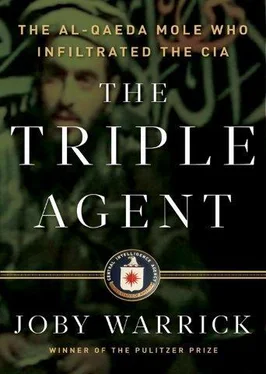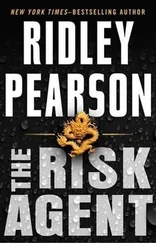A bright spot for Panetta was the CIA’s continuing successes against al-Qaeda, as the new administration embraced and even expanded the agency’s campaign of missile strikes against terrorist bases in Pakistan near the Afghanistan border. In his daily intelligence briefings, Panetta could see the impact the strikes were having. For the first time in years, al-Qaeda’s leaders faced a mortal threat within their own sanctuary, the prospect of instant annihilation from robot planes that hovered continuously overhead, their mechanical humming filling the evening silence and making men fearful in their own beds.
But for Panetta even these successes came at a price. The son of Italian immigrants, Panetta was a lifelong Catholic who regularly attended mass, and the responsibility for deciding life and death for other individuals—even suspected terrorists living thousands of miles away—weighed heavily on him. His predecessor, Mike Hayden, had warned that the job would require “decisions that will absolutely surprise you.” It was true: Once a week, on average, Panetta was approving what amounted to a death sentence for a group of strangers on the other side of the globe. The CIA’s new weapons systems were impressively precise, with capabilities that exceeded the accounts most people would read in newspapers. The agency’s Predators could put a missile through the window of a moving car or nail a target the size of a dinner plate in a narrow alley at night without harming buildings on either side. The aircraft’s operators could—and, on at least one occasion, did—change a missile’s trajectory in midflight to avoid an unintended target that suddenly wandered into its path. According to the agency’s closely held body count, its missile strikes had inadvertently killed nine people by the time Panetta took office, or an average of one unintended death for every forty al-Qaeda or Taliban fighters targeted.
Still, friends kidded Panetta about becoming a CIA hit man so late in his life. “Does your bishop know what you’re doing?” one close friend quipped when Panetta talked about his work. But the CIA director wasn’t amused.
“I don’t take it lightly,” Panetta protested.
Yet week after week, when Panetta was confronted with the choice, his personal qualms would fall away against what he perceived as the far greater evil. Al-Qaeda and its Taliban allies were contemplating acts of mass murder, unburdened by remorse. In all the world, only the CIA had both the means and the will to reach into the terrorists’ mountain sanctuary to stop them.
Now, in his third month as CIA director, Panetta was facing the same life-or-death calculation for a Pakistani man who the CIA believed was preparing to detonate a dirty bomb. Until that spring the United States had never regarded Baitullah Mehsud as a significant threat to Americans, and the CIA was just beginning to redirect its vast surveillance network toward the task of searching for him. Inevitably, the agency would find Mehsud. When it happened, Panetta would know what to do.
One of the most talented of Langley’s new crop of terrorist hunters arrived at work, as always, in flip-flops. Elizabeth Hanson liked wearing beach shoes, even in the dead of winter. The snap of her sandals as she padded around the CIA’s corridors was as familiar to her colleagues as her blond mane, with the couple of rebellious curls that resisted her efforts to flat iron them into submission. She kept a pair of dressier shoes under her desk for the days when she was unexpectedly summoned to the executive floor to talk about al-Qaeda, and she could quickly turn on the glamour when the situation demanded it. But on normal working days Hanson believed in making herself comfortable: jeans, flip-flops, and sometimes even pigtails. After all, she routinely worked long hours, and when things were busy at the office, she often stayed up through the night, watching the live video feed from the CIA’s Predator aircraft as they stalked one of her targets. And June was already shaping up to be a remarkably busy month.
She plopped down at her small cubicle desk, pushing aside papers to make room for her caramel macchiato, then switched on her computer monitor and began sifting through the morning’s secret cables from Pakistan and Afghanistan. The agency’s senior targeters were caught up in an urgent search for one Baitullah Mehsud, and that group included Hanson, who was developing a reputation for her ability to track down the country’s most dangerous foes. Terrorist figures of greater importance than Mehsud had been on Hanson’s list in the past, and some of them were no longer among the living.
Coworkers sang out greetings as they wandered by, and Hanson acknowledged them with a smile. It was early, but the CIA’s Counterterrorism Center was humming with a kind of low-grade tumult that never completely subsided. The place was divorced from normal time distinctions of day and night, early and late, weekday and holiday. The cavernous main room was perpetually awash in a fluorescent brightness that compensated for the lack of windows. (Any portal to the outside world is viewed as a security risk, new hires are told.) The center’s warrens of cubicles and flat-panel TV monitors took up much of the ground floor of the agency’s sleek new headquarters building, a facility that was built, for security’s sake, into a hillside. Workers in the Counterterrorism Center arrived on the fourth floor through a gleaming glass atrium festooned with scale-model spy planes and statues, then descended four levels below to the bunker where the agency’s most sensitive operations are managed.
Hanson stood out in this subterranean world, and not just because of her footwear. Barely thirty, she had a kind of understated midwestern girl-next-door beauty that men adored and women admired. Coworkers loved her for her outsize sense of humor, which ranged from slyly sarcastic to scatological to downright silly. She could quote endlessly from comedies like The Hangover or put her coworkers in stitches with a dead-on impression of Beavis from the cartoon series Beavis and Butt-Head . The most mundane CIA-speak would be transformed into off-color puns (“OK, who had weekend doody?” and “Have you been debriefed?”), and when she needed a favor from a boss or colleague, she would preface the request by demanding, “I want a pony.” A small circle of close friends knew her by a family nickname, Monkie, an artifact from her girlhood fascination with the famous sock puppet monkeys originally manufactured in her hometown of Rockford, Illinois.
Hanson’s playful demeanor belied the utter seriousness with which she approached the core business of the Counterterrorism Center. For more than two years, she had worked as a targeter, a job that entailed tracking terrorists on the CIA’s wanted list, by whatever means available, from a tiny cubicle a few miles outside Washington. She had her own list of targets and access to raw data from every surveillance tool in the agency’s sizable kit. Like an artist assembling a giant mosaic, she could summon bits of information from wiretaps, cell phone intercepts, surveillance videos, informant reports, and even news accounts, blending them with a mix of imagination and conjecture to develop a profile that the agency’s spies, drone operators, and undercover case officers could use to physically spot the target. More recently Hanson had become a group leader for other targeters, overseeing multiple efforts to track down terrorist leaders. Often she spent hours monitoring the hour-by-hour surveillance of a terrorist target, and she personally made the call to the CIA director to request the go-ahead to launch one of the agency’s Hellfire missiles. Hanson had helped track down some of al-Qaeda’s most senior leaders, including Osama al-Kini, the man killed by a CIA missile on New Year’s Day. And her intricate knowledge of Pakistani terrorist networks made her an indispensable source of expertise when agency officers were on the trail of lesser terrorists, some of them al-Qaeda’s closest allies. These included the cagey Pashtun warlord Jalaluddin Haqqani, the longtime ally of Osama bin Laden’s whose fighters were attacking U.S. troops around the eastern Afghan city of Khost; and, more recently, leaders of the Tehrik-i-Taliban Pakistan alliance headed by Baitullah Mehsud.
Читать дальше












